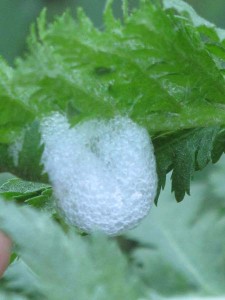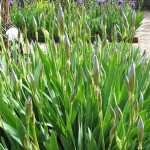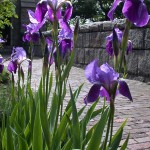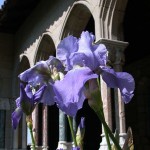Those cuckoos . . .
Above: Froth on a tansy plant in Bonnefont garden on a May morning. ??In the Middle Ages, this foamy substance was believed to be the spittle of the cuckoo. The froth is secreted by insects known as spittle bugs.
The cuckoo-spittle, gowk’s-spittle, cuckoo’s-spittens, frog-spit, toad-spit, snake’s-spit, or wood-sear, of England and Scotland; Kukuk-speichel, and hexenspiechel (witch’s spit) of the Germans; gugger-speu of the Swiss; gred-spott (frog-spit) of the Swedes; giogespit of the Danes; trold-kiaringspye of the Norwegians; and crachat de coucou of the French . . .
???James Hardy, “Popular History of the Cuckoo.” In The Folk-lore record, Vol. 2. London: Nichols & Sons, 1879.




